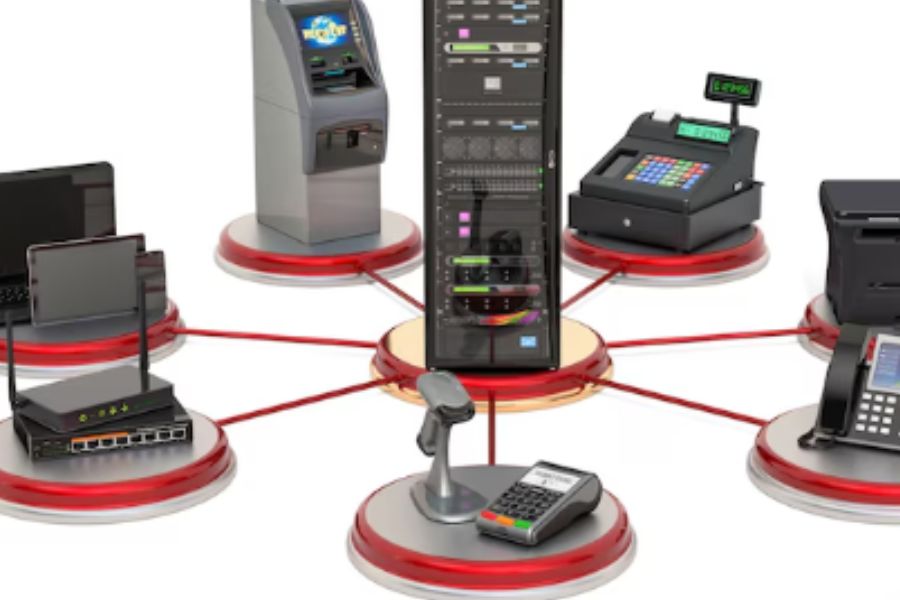It All Started with a Ticket Printer That Wouldn’t Stop Screaming
There’s a sound you never forget in this business.
It’s not the sizzle of fajitas or the hum of a full dining room. It’s that sharp, robotic beep-beep-beep of a POS printer spitting out tickets like it’s possessed by Gordon Ramsay’s angry ghost.
That night, I stood in the expo window watching orders fly out like confetti, my kitchen looking like a NASA control room staffed entirely by caffeine addicts. The POS was supposed to make things easier. Instead, it was the world’s most expensive paper shredder.
Welcome to the beautiful chaos of restaurant technology.
From Paper Checks to Cloud Servers: The Tech Evolution Nobody Asked For
I’ve lived through every tech wave the restaurant world has thrown at us — from handwritten checks and faxed schedules to AI-powered POS analytics that promise to “optimize your labor efficiency by 11%.”
Let me tell you something: when you’re 15 covers deep on a Saturday night, no algorithm on earth can optimize a line cook’s patience.
We all bought into the dream.
“Cloud POS!” they said.
“Mobile ordering!” they said.
“Seamless integration!” they said.
What we got was a 42-minute hold time with customer support in another hemisphere and a recurring charge we still can’t identify three years later.
Confession: It’s Not the Tech’s Fault (It’s Ours)
Here’s the uncomfortable truth: restaurants aren’t broken because of bad tech. They’re broken because we keep chasing the new shiny object instead of solving the old boring problem.
We want tech that fixes turnover, increases sales, and somehow keeps the fryer from overflowing when your new guy forgets to thaw the fries. Spoiler: it doesn’t exist.
Technology is a multiplier — it makes your strengths stronger and your dysfunctions catastrophic.
If your team communicates well, tech amplifies it.
If your team’s culture is chaos? Congrats — you just digitized the chaos.
The POS Demo Is Always a Lie
You know how dating apps show everyone’s best angle? POS demos do the same thing.
The sales rep says:
“Our interface is so intuitive your team will learn it in an hour!”
Reality says:
“Your bartender is about to open 17 tabs and accidentally 86 the entire menu.”
We’ve all been there. The slick touchscreen, the tablet stand, the promises of “AI-driven insights.” It’s seductive. Until your GM calls you at midnight because the “AI” decided to change the menu prices in real time.
The Real Cost Isn’t the Subscription Fee
You know what no tech company ever tells you?
The true cost isn’t $199/month per terminal — it’s the training, resistance, and emotional therapy your managers need afterward.
I once led a rollout for a 50-unit brand. We did training sessions, webinars, even “POS pep rallies.” (Yes, that was a real thing.)
But the night before go-live, one of my best GMs pulled me aside and said:
“Robert, this system’s great and all, but can it make my dishwasher show up on time?”
And there it was — the truth wrapped in sarcasm.
No matter how good your tech is, it won’t fix your people problems.
But great people can overcome bad tech.
How to Actually Choose Tech That Works
After 25+ years of watching this circus, here’s my simple, battle-tested playbook for choosing restaurant tech that won’t ruin your weekend:
1. Solve one problem, not all of them.
Pick tech that fixes a single choke point — maybe it’s inventory, scheduling, or online ordering. If it claims to “do everything,” it usually does everything poorly.
2. Make your managers the buyers.
The folks using the system daily should be the ones evaluating it. If your corporate team buys it without operator input, expect an uprising worthy of Les Misérables.
3. Demand real support.
If your vendor’s “support line” is an FAQ page, run. Find a partner who answers calls, not bots.
4. Integrate with empathy.
Rollouts fail because people feel blindsided. Communicate early, train patiently, and celebrate small wins.
5. Remember: simple scales.
If your tech stack looks like NASA’s launch control, your managers won’t use it. Simple, fast, reliable beats fancy every day of the week.
When Tech Actually Works: The Magic Moment
When you finally find a tool that actually helps, it feels like magic.
Like when we switched to a real-time labor dashboard and our managers suddenly started cutting shifts based on data, not gut. Or when mobile pay cut table times by 12 minutes, letting servers earn more and guests smile faster.
That’s the good stuff. The kind of change that saves money and sanity.
Tech should serve your team, not the other way around.
The Future Is Hybrid (and That’s a Good Thing)
Look — I love innovation. AI, robotics, automation — I geek out on it. But I also believe the future belongs to restaurants that balance tech and humanity.
The POS will never replace the host who remembers your kid’s name.
The tablet can’t read the tension in a guest’s eyes.
And no AI knows when a line cook just needs a smoke break and a pep talk.
Tech gives us leverage. Humanity gives us loyalty. You need both.
Final Thoughts: I’d Still Buy It Again (But Smarter This Time)
Would I still buy that nightmare POS?
Yeah, probably — because every mistake taught me something.
I learned to vet partners, not vendors.
To train humans before features.
And to never trust a system that calls itself “frictionless.”
Because if there’s one thing the restaurant business will always be —
It’s gloriously, beautifully, friction-filled.
And that’s exactly how we like it.
About Kuypers Creative
At Kuypers Creative, we help restaurant brands make smarter decisions about marketing, technology, and storytelling. Whether it’s choosing a new POS, rethinking your digital presence, or turning chaos into strategy, we bring humor, honesty, and hospitality back to the business side of restaurants.
👉 Learn more at KuypersCreative.com or connect with me, Robert Kuypers, on LinkedIn.


